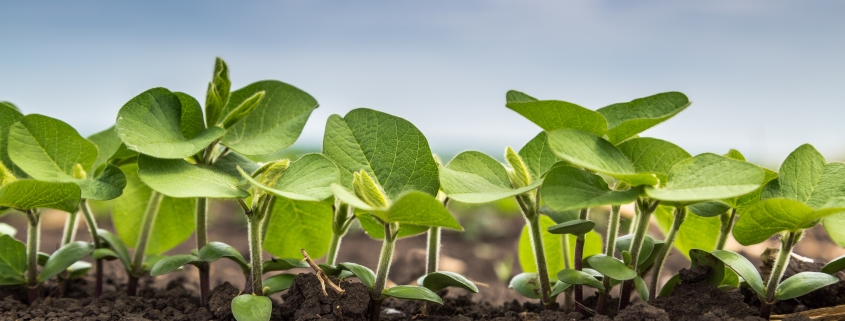IP Crop Network – May Report
A torrent of rain has made its way throughout the Midwest in the back half of May. Farmers are hard at work trying to finish getting the crop in the ground. SSGA’s IP Crop Network will be published twice a month, highlighting growing conditions for identity preserved crops from different regions around the country. The reports include both firsthand accounts and data from the National Agricultural Statistics Service (NASS) weekly Crop Progress reports.
Planting has come to a standstill for parts of the Upper Midwest. There has been very little activity in the past 10 days due to rain and high winds. Everyone is sitting with adequate moisture for the most part so as soon as the fields are fit to be planted, the rest of the soybeans will be planted in plenty of time to ensure they reach maturity. In North Dakota, farmers are about 65% planted for food-grade soybeans and expect to be close to 100% in the next two weeks. Overall, farmers are at 58% planted for soybeans, which is well ahead of the 5-year average of 43%.
In Minnesota, 91% of soybeans have been planted with 56% emerged. This is again well ahead of the five-year average. Many farmers have finished planting and are starting to think about their next steps.
Over the past two weeks, favorable weather has provided a significant window for planting across Wisconsin. Extended dry conditions have allowed growers to make rapid progress with spring planting. Many farmers have not only caught up but are now ahead of schedule compared to recent years. According to the latest national planting progress reports, Wisconsin is outpacing both last year’s progress and the five-year average – a positive development for early crop establishment. Recent rainfall across much of the state has helped ease concerns about early-season moisture deficits. Reports from growers indicate rainfall totals between 1.0 and 1.5 inches in many areas, offering timely relief for germinating seeds and recently emerged crops. Soil moisture levels have improved modestly, though some variability remains depending on local precipitation patterns. Looking ahead, the seven-day forecast into June suggests continued chances for additional showers, which could further support early crop growth and soil recharge. However, farmers are keeping a close eye on potential delays in fieldwork, particularly herbicide applications and post-emergence treatments, should rainfall persist. Crop conditions so far appear favorable, with early-planted corn and soybeans showing strong emergence in fields with good drainage.
In east central Illinois, the mid-April corn planting looks great along with the later planted corn, and farmers are starting to spray post herbicides. Mid-April beans are growing slower than wanted because of cooler temperatures but will hopefully take off soon. The last planted beans are just starting to emerge – Illinois is at 58% emergence as of the most recent NASS report. Last week saw 2.5 inches of rain and an F1 tornado about half a mile from one grower’s shop, but no significant field damage.
In southeast Michigan, farmers are still planting to keep up the pace. They can see the end of corn planting and soybeans are over half done. Farmers have had plenty of rain delays this spring overall. For the week ending May 25, Michigan farmers only had 2.4 suitable days for fieldwork.
According to the USDA NASS report, Missouri experienced 3.7 days suitable for fieldwork, providing a small window for planting, spraying, and other fieldwork activities in the week ending May 25. Growing conditions remain strong across the board, and moisture levels continue to support early season growth. Overall, soil profiles are in good condition with 75% of topsoil and 80% of subsoil having adequate moisture levels. The winter wheat crop is looking very good with 75% being rated at good to excellent. 96% of the crop has headed which is 3% ahead of the 5-year average. 94% of the corn crop has been planted, slightly ahead of the 5-year average of 90%. Of the corn that has been planted, 78% has emerged. 72% of soybean acres have been planted which is well ahead of the 5-year average of 53%, with 48% emerged.
Stay tuned for more updates from SSGA throughout the growing season. View the entire NASS report from May 27 here.






Leave a Reply
Want to join the discussion?Feel free to contribute!